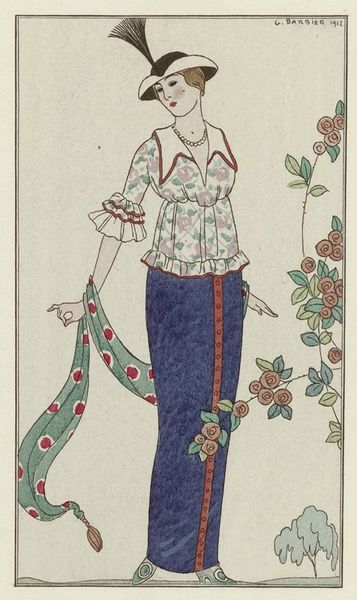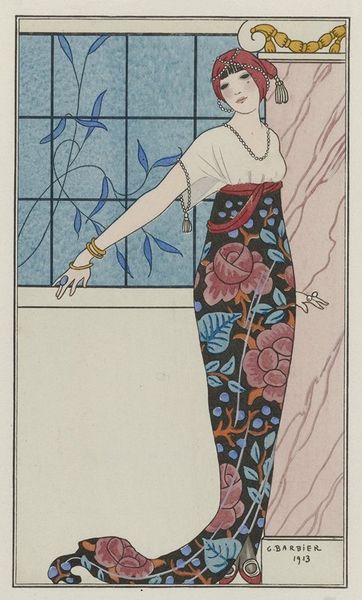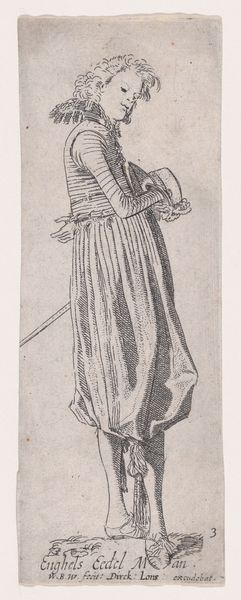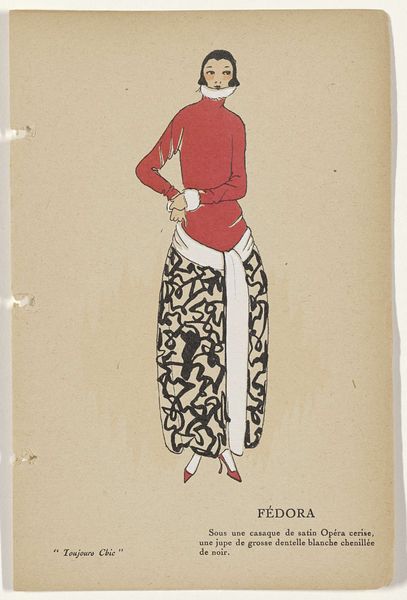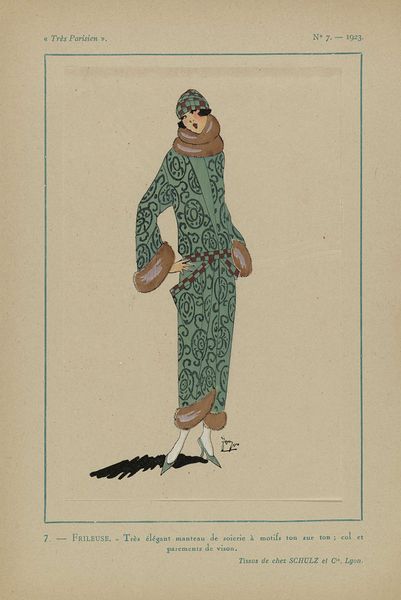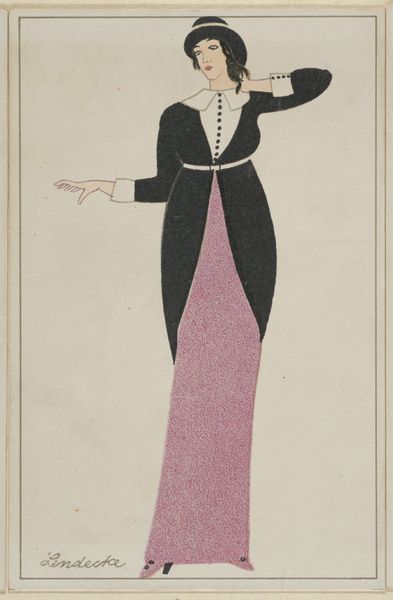
drawing, watercolor
#
portrait
#
drawing
#
art-nouveau
#
watercolor
#
watercolour illustration
Copyright: Public Domain: Artvee
Curator: This is George Barbier’s "Manteau de Théâtre" from 1913, rendered delicately in watercolor. Editor: The image is striking. I’m immediately drawn to the theatrical artifice of it all. A woman in a rather unusual outfit peers out from behind a curtain, half-revealing herself. The color palette feels rich but also somewhat muted, fitting the era perhaps. Curator: Indeed, the choice of watercolor allows for these subtle gradations of color. What's particularly interesting is how Barbier marries high fashion with stage design; note the extravagant fur cuffs and feathered headdress—are those slippers of fur too? He transforms everyday materials like fur and feathers, sourced from animal industries, into luxurious adornments, almost mocking the bourgeoisie of his time. Editor: Yes, and those textures are so crucial. The floral patterns of the bodice, the stark lines of the skirt… the image plays with a range of motifs that echo various themes. Consider the repeated circular patterns throughout: the floral arrangement on her dress, repeated also on the drawn back curtain and mirrored at the hem. There's a feeling that this woman is acting on stage or taking on a persona somehow separate from herself, almost masked by symbols of status or luxury. Curator: And look closely at how the pattern repeats across different surfaces and materials. Barbier doesn't merely replicate designs; he reinvents how these patterns interact with the wearer, raising questions about who assembles these patterns, and how these elements come to define high style, fashion production, and the artist's vision. It also suggests the layers that go into crafting a performance, both onstage and off. The artist isn’t simply sketching garments but actively examining the construction of theatrical spectacle. Editor: The image is so layered, you almost want to draw it back to see who is observing. It makes one consider the female form as something almost archetypal through design, but presented through a hyper stylized design as Barbier frames his character with motifs drawn straight from a performance stage. Curator: Absolutely, seeing Barbier challenge the established social order gives me new insights into how artists confront hierarchies of taste. Editor: The way symbols are used adds such an exciting layer to its reading.
Comments
No comments
Be the first to comment and join the conversation on the ultimate creative platform.
